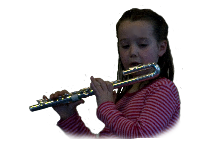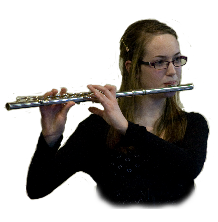

The Suzuki Method was developed by Shinichi Suzuki who was inspired by the way that children learnt to speak their native language. He saw that when given encouragement and love the child responded and developed the ability to talk. He realised that musical ability could be acquired in the same way and so the ‘Mother Tongue Approach’ was born. A number of factors work together to develop ability:
- Listening
- Motivation
- Repetition
- Step by step development
- Memory
- Vocabulary
- Parental input
- Love
In the Suzuki method each of these principles is applied in the learning of an instrument.
Listening
Listening to recordings of the Suzuki repertoire are crucial to learning so much emphasis is placed on this. Studies have shown that the frequency of listening is directly proportional to the speed of development. Listening to the music played with a beautiful tone provides the child with an excellent role model. In lessons children are taught to listen to their own playing so that they play sensitively with a fine tone.
Suzuki Repertoire
The Suzuki repertoire is the core of the child’s musical development. The pieces have been carefully developed to provide small skill based steps that act as building blocks for future development. Technique, musicianship and stylistic playing are developed through the study and repetition of these pieces. The repertoire provides familiarity, a motivation to progress and a bond with all Suzuki students across the world. Once learnt pieces are not forgotten but will continue to be played, enjoyed and developed.
Reading Music
Children taught with the Suzuki Method do learn to read music, but just as reading is started after a child can speak fluently so it is with the introduction of written notation. The stage at which a child begins to read music varies according to age and general development. However, it will always be after basic playing skills have been mastered. Integrating music reading into the Suzuki repertoire is a vital part of the child’s musical development. Once note reading starts many supplementary pieces are played to enhance and enrich the skills already learnt.
Role of the Parent
Learning takes place in an environment of co-operation between teacher, parent and child. The parents role is crucial to this process. The parent’s role involves:
- Attending each lesson with the student, taking notes and practising with the student at home
- Playing the recordings daily at home
- Understanding the instrument and how to take care of it
- Helping to create an environment of affection, support, encouragement and understanding
- Attending with the child, workshops, concerts, group lessons, graduations and summer schools.

